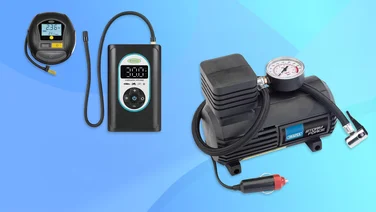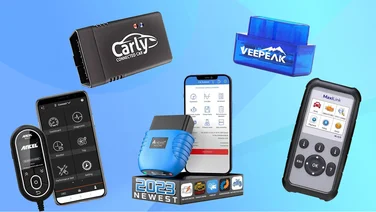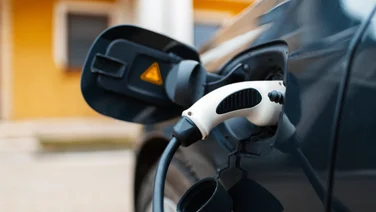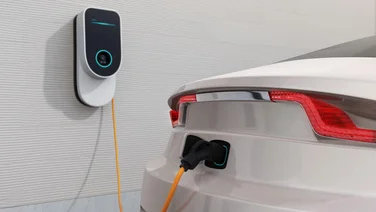To help us provide you with free impartial advice, we may earn a commission if you buy through links on our site. Learn more

- Big screen is great for split-screen views and complex junctions
- Excellent mapping and clear directions
- Strong connected features
- Size requires careful positioning
- Alexa voice commands aren’t perfect
Time was that new satnavs were a bigger deal, with the latest models from Garmin and TomTom slugging it out over who offered the most up-to-date maps, clearest guidance and best features. These days, however, the biggest challenge for a Garmin satnav, or indeed any brand, is getting anyone to take much notice. Smartphones offer competent GPS on increasingly bigger screens for a cheap annual subscription or no cost at all. Many new cars offer satnav as an option, or even as a standard feature.
So what can the two market leaders do? In Garmin’s case, it’s go big, with bigger screens and a bigger feature set than ever before. The new DriveSmart range features 6in, 7in and 8in models, with the DriveSmart 86 the biggest of them all. And if you’re looking for the best dedicated satnav experience available, this super-sized beast is a serious contender.
Garmin DriveSmart 86 review: What do you get for the money?
The 8in DriveSmart 86 sits at the top of the new Garmin range and it’s the biggest of the latest models with an 8in, 1,280 x 800 resolution display.
Beyond this, you’re getting the most comprehensive set of features in any Garmin satnav to date: live traffic updates and fuel prices; points of interest and reviews from TripAdvisor and FourSquare; plus driver alerts and routing to avoid environmental zones, including those in London.
Satnavs don’t get much smarter, either. As well as Bluetooth connectivity to display your smartphone notifications and calls, it has integrated Amazon Alexa, giving you new options for navigation, music streaming, Alexa skills and more. Garmin bundles it with a USB cable, a dual-port 12v adapter and a suction cup mount.
The new models all use a micro-USB port for power and charging, and have a microSD slot on the rear to give you some additional space for maps should the 32GB onboard not be enough. It comes with Full Europe maps pre-installed but more maps are available from Garmin should you need them.
It’s also worth mentioning that you can combine the DriveSmart 86 with a rear-facing camera to get a rear view through the screen for parking and reversing. We weren’t sent the rear camera to try this out but it might be a plus if your car doesn’t have it built in.
READ NEXT: These are the best microSD cards to buy today
Garmin DriveSmart 86 review: How easy is it to use?
Be in no doubt, this is a big satnav. Indeed, you might be wondering if it’s too big. You certainly need to be careful about where you position it so it doesn’t obscure any vital area of the windscreen. It also helps if you can place it somewhere where you won’t be distracted while you’re driving. With a device roughly the size of a compact Android tablet, this is easier said than done. Mounted on my dashboard, it looks enormous, and in the end I shifted it to a place low down on the passenger’s side.

That said, there are ways in which that extra size makes it easier to use. If you have to glance quickly at the screen, it’s easier to get the information you need and get your eyes back on the road ahead, where they really need to be. It’s also easier to search for an address or point of interest while you’re stopped, and it’s great for using Garmin’s split-screen live traffic features, driver alerts and check up-ahead feature, which throws up potential food and petrol stops on your route.
As long as you can see and touch the screen, it’s easy to enter and select a point of interest, pick a route and get started on your journey, and with new features such as routing around environmental zones, like those in London, you’ve got plenty of options and a lot of info to work with. What’s more, as with the previous models, the integration with Foursquare and TripAdvisor genuinely helps if you’re trying to find somewhere to eat or stop mid-drive – or if you’re looking for a tourist trap to while away an hour or two.
At times, you do get the feeling that Garmin’s UI hasn’t moved on. For all the integration of online features and clever split-screen views, everything is a bit chunky, primary-coloured and, maybe, a bit dull. Yet, it’s clear and functional and there’s a question whether new and stylish is what the satnav market wants. If you’re used to Garmin’s software, you’ll feel comfortable with this from day one.
Garmin DriveSmart 86 review: How well does it perform?

It’s Garmin’s more advanced guidance and mapping features that give Garmin the edge over your average smartphone satnav app, and here Garmin’s experience definitely shows. The use of street names, landmarks and 3D buildings make directions easier to follow when you’re driving in town and it holds up pretty well for rural driving too, bar the odd occasion where you need to bear left or right rather than, as the directions insist, make a turning.
We’ve found TomTom’s best satnavs tend to perform better here. They generally do a superior job of lane guidance as you come up to a roundabout and they don’t have the propensity of Garmin satnavs to send you down narrow country lanes when a later turning would get you to your destination with no risk of a passing place panic.
Most of the time, however, the DriveSmart 86 works brilliantly. It gives fair warning of an upcoming turn, and instructions are issued with enough time for you to follow them – something that doesn’t always happen with smartphone satnavs. And because the screen views and route options are extensively configurable, it’s easy to get the satnav working how you want it to and delivering routes you’ll feel happy taking. The parking and live fuel pricing features are also useful, and delivered accurate results whenever I checked them.
READ NEXT: Check out our favourite car phone holders
Garmin DriveSmart 86 review: What could be improved?
I’ve had problems in the past with Garmin’s “OK Garmin” voice controls, and they’re not entirely settled by adding Alexa to the mix. The idea is that you use OK Garmin for basic navigation and Alexa for audio, calls and more advanced directions; however, the basic commands only gave us relevant results roughly half the time and, to select one of them, you have to pick an option from a list, which you can only do by glancing down at the screen.

Alexa is more reliable in recognising that you want to stream music from a certain genre or artist, or that you want to find a nearby petrol station or town. Yet Amazon’s voice assistant still makes plenty of mistakes, at one point misrecognising a nearby town as a product that I’d like to buy, and a popular tourist destination as an alternative several counties away. The recognition improved when I used the built-in audio calibration tools but, as with Alexa in the home, it’s never flawless.
Alexa avoids OK Garmin’s pitfall by reading search results aloud, so you don’t have to read them off the screen, but then falls down by expecting you to select your preferred option by tapping the touchscreen. That’s fine if you’ve got a navigator riding shotgun, but not if you’re driving on your own.
Most of all, I’m not 100% sure what the point is. To use Alexa through the Garmin I need the connectivity built into my smartphone, not to mention both the Garmin Drive and Alexa apps installed. Yet with the smartphone and Alexa app, I already have Alexa in my car, including a dedicated auto mode. Is Alexa really a killer feature for a satnav?
Garmin DriveSmart 86 review: Should I buy it?
It’s tempting to question whether you should buy any dedicated satnav device, given that smartphone apps are now so good, with smarter, better-integrated voice assistants and effective audio if your car has a Bluetooth system built in. But there’s still something to be said for a dedicated, single-purpose satnav, particularly with Garmin’s superb UI. The size does come with a few problems, but it also makes the satnav’s instructions more accessible at a glance.
Is this the best dedicated satnav? It’s certainly right up there. The TomTom Go Discover comes dangerously close, with excellent mapping, great directions and the best screen TomTom has ever produced. The smaller 6.95in DriveSmart 76 isn’t a huge step on from previous models, but could be a more practical choice in many vehicles. Yet the DriveSmart 86 has a slicker physical design, a great UI and a powerful set of features, and feels slightly faster and more responsive. If you’re going to buy a satnav and you’re keen on a bigger screen, you won’t find a better choice.






